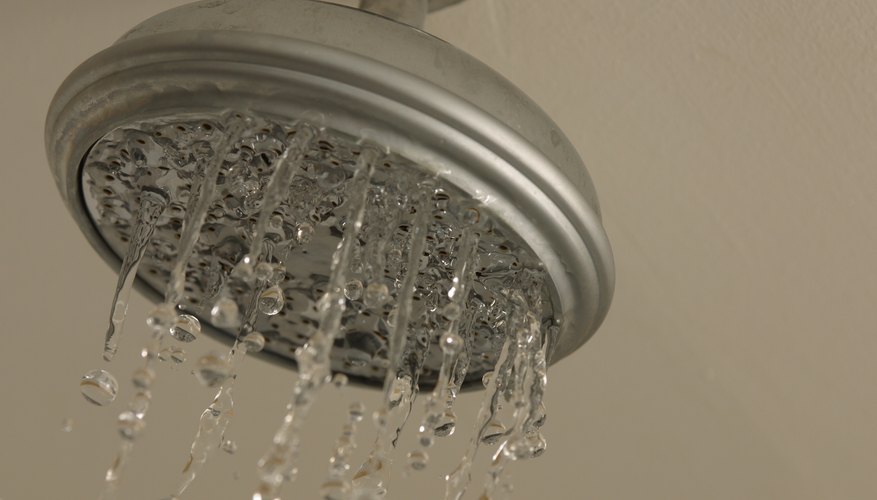A shower head's exposure to moisture leaves it vulnerable to mould and mildew, which often appears as black, green or grey specks. Mould or mildew will usually be more heavily concentrated in creases and seams, such as around a pivoting joint and where the shower head connects with the shower wall. Shower heads are typically metal or hard plastic; the cleaning method for removing mould is the same for either material.
- A shower head's exposure to moisture leaves it vulnerable to mould and mildew, which often appears as black, green or grey specks.
- Mould or mildew will usually be more heavily concentrated in creases and seams, such as around a pivoting joint and where the shower head connects with the shower wall.
Put on your safety goggles and rubber gloves. Mix laundry bleach and water in a spray bottle at a 50/50 ratio.
Shake the spray bottle to blend the solution. Spray the mouldy shower head with the bleach and water.
Scrub mouldy crevices of the shower head with a toothbrush. Re-spray these areas with the bleach solution when you are finished scrubbing.
Wet a sponge in hot water and wipe off the tap. If any mould remains, spray the shower head again and wait a few minutes before wiping it.
Rinse out the sponge in hot water and wipe this over the shower head to remove excess bleach solution.
WARNING
Do not mix the bleach and water solution with any other cleaners, especially any that may contain ammonia -- mixing bleach and ammonia creates a toxic reaction.
